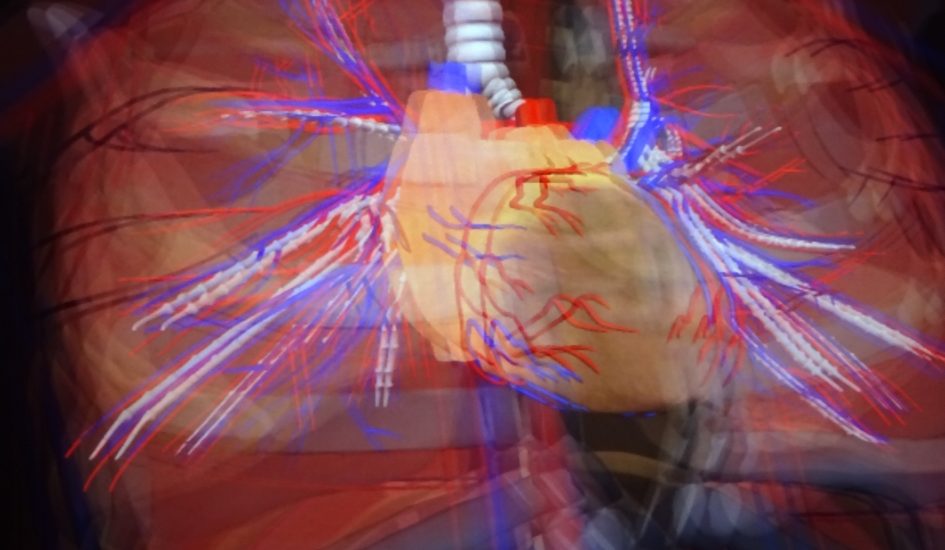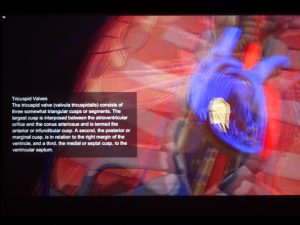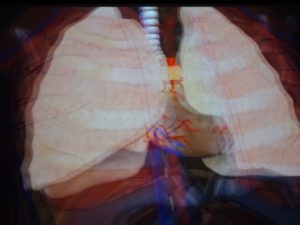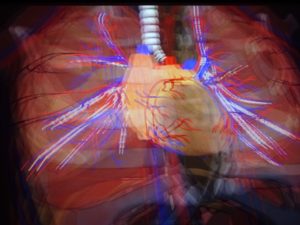Conventional anatomy education makes use of two-dimensional (2D) images of three-dimensional (3D) anatomical objects to illustrate their spatial locations and interrelationships. Good visual-spatial ability is needed to mentally transform or fuse multiple images that are required to understand a concept. While animations and videos are developed for anatomy learning, the presentation of 3D anatomical objects on 2D planar computer screen does not render the depth perception necessary for intuitive understanding of the spatial details and subtlety. To enhance anatomy education, a stereoscopic 3D visualization system is proposed in this paper. Depth perception is naturally rendered using active stereo technology to create an immersive learning environment which allows students to directly interact with and explore the virtual anatomical objects. In addition to translation, rotation, zooming in and out, the body parts are modeled as multi-layer objects so that the outer layers can be set to semi-transparent to expose the inner layers, while the associations between the inner and outer layers can also be depicted.
Publications
- Stereoscopic Three-Dimensional Visualization for Immersive and Intuitive Anatomy Learning. The 8th IEEE Conference on Technology for Education, Mumbai, India, December 2-4, 2016. [doi]



